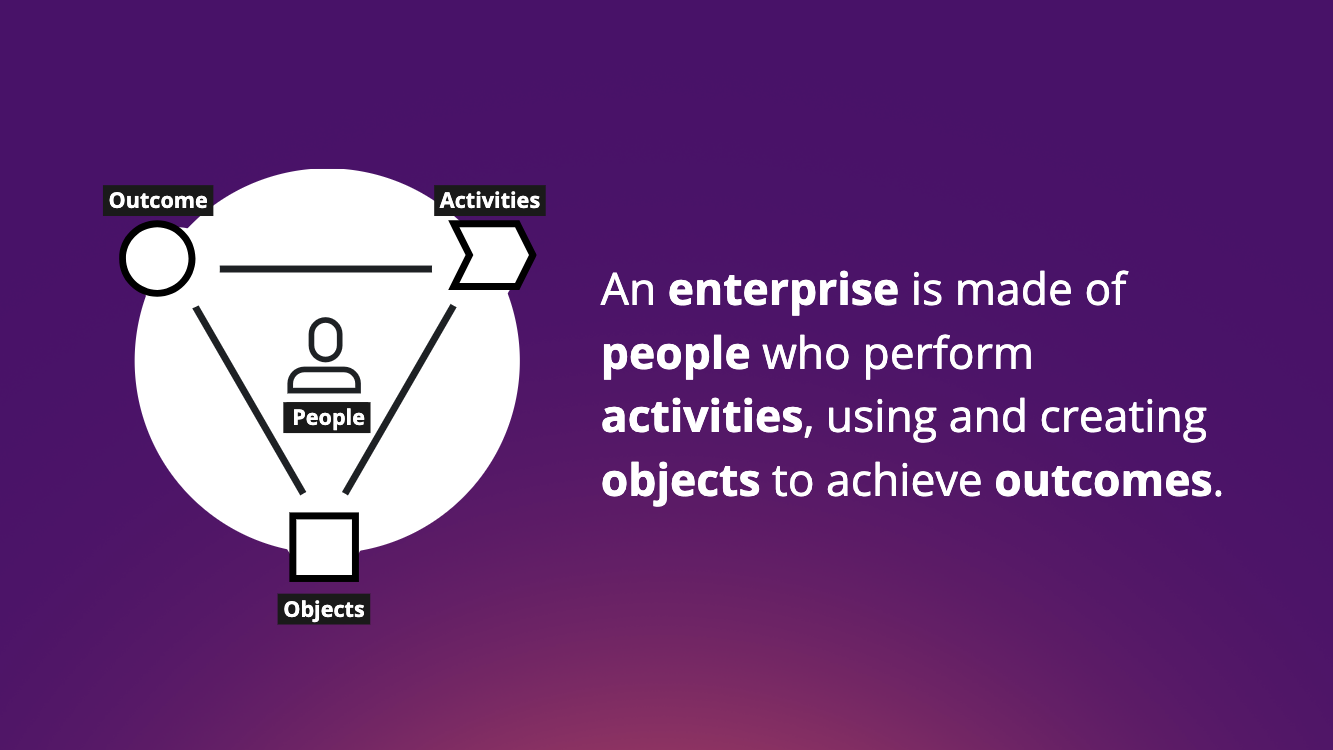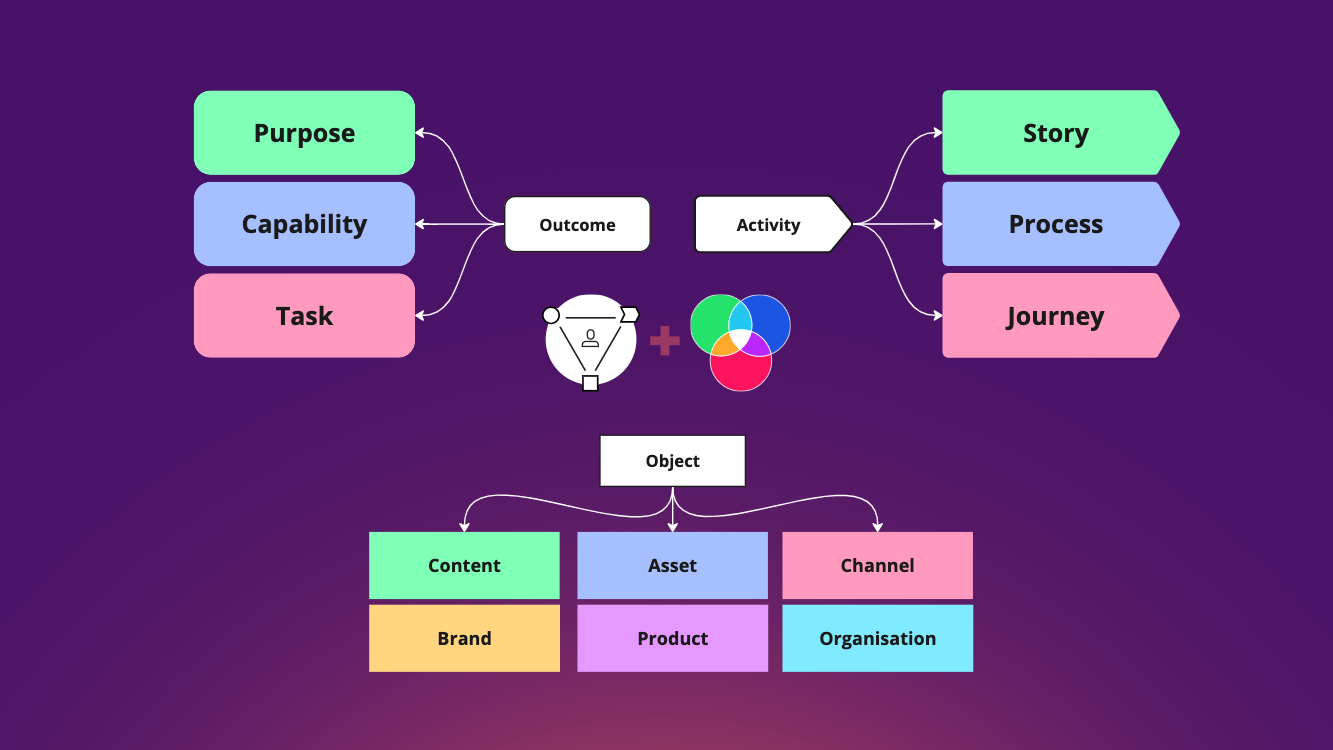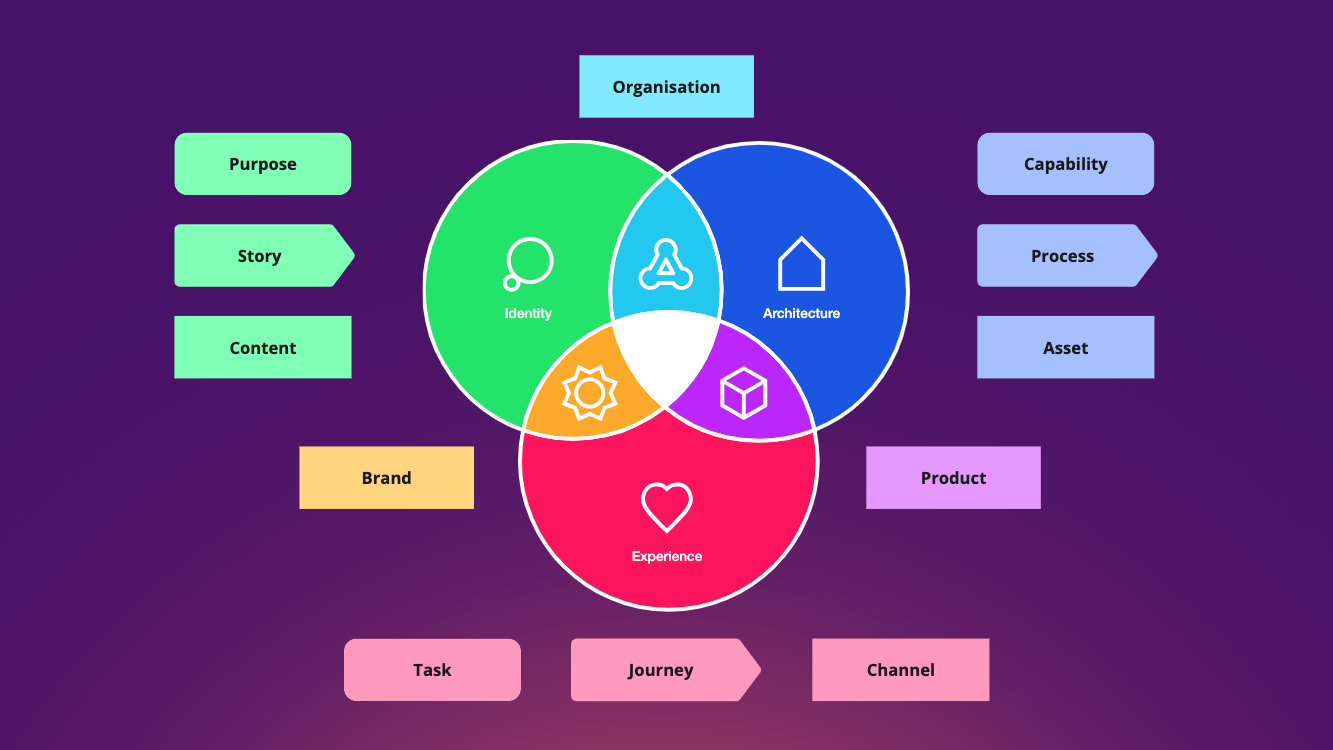EDGY is a simplified language designed to facilitate communication between different professions. It's very "meta," I know, but it works. Before I go too far into my explanations, let’s review the basics.
There are 4 basic elements in this language:

The Venn diagram is not the language itself, but a conceptual model where these 4 elements make sense. When these basic elements are juxtaposed with their facets and intersections, you get 12 additional elements, which retain the nature of the basic element.

Let’s take an example. If you're discussing the actions to take to improve your business (an activity), you would need to:
Thus, EDGY is made up of 16 elements and a Venn diagram. It's simple, very simple. However, businesses are not.

In my recent years as a consultant, I quickly noticed the clarity that EDGY brought to discussions. However, the Venn diagram was never intended to be the only tool. That's why I integrate my knowledge of wayfinding, atomic design, information visualization, and theories on cognitive capacities to better navigate enterprises. The result? 7 maps with 3 levels of abstraction that provide a holistic view of businesses, digital transformation projects, and change management. EDGY is the common thread running through all these maps, making the whole coherent.
But before we look at maps and levels of abstraction, we will do a quick review of the Venn diagram in the next article.
If you want to learn more, check out Jean-Sébastien's talk at the Intersection 24 conference and his LinkedIn page.
Did you like this blog post? Never miss an update when we publish next:
ENTERPRISE DESIGN PATTERNS
Capturing a wealth of experience from many sources, four world-class enterprise designers and architects present a collection of 35 immediately applicable solutions to successful enterprise design.
Buy the book